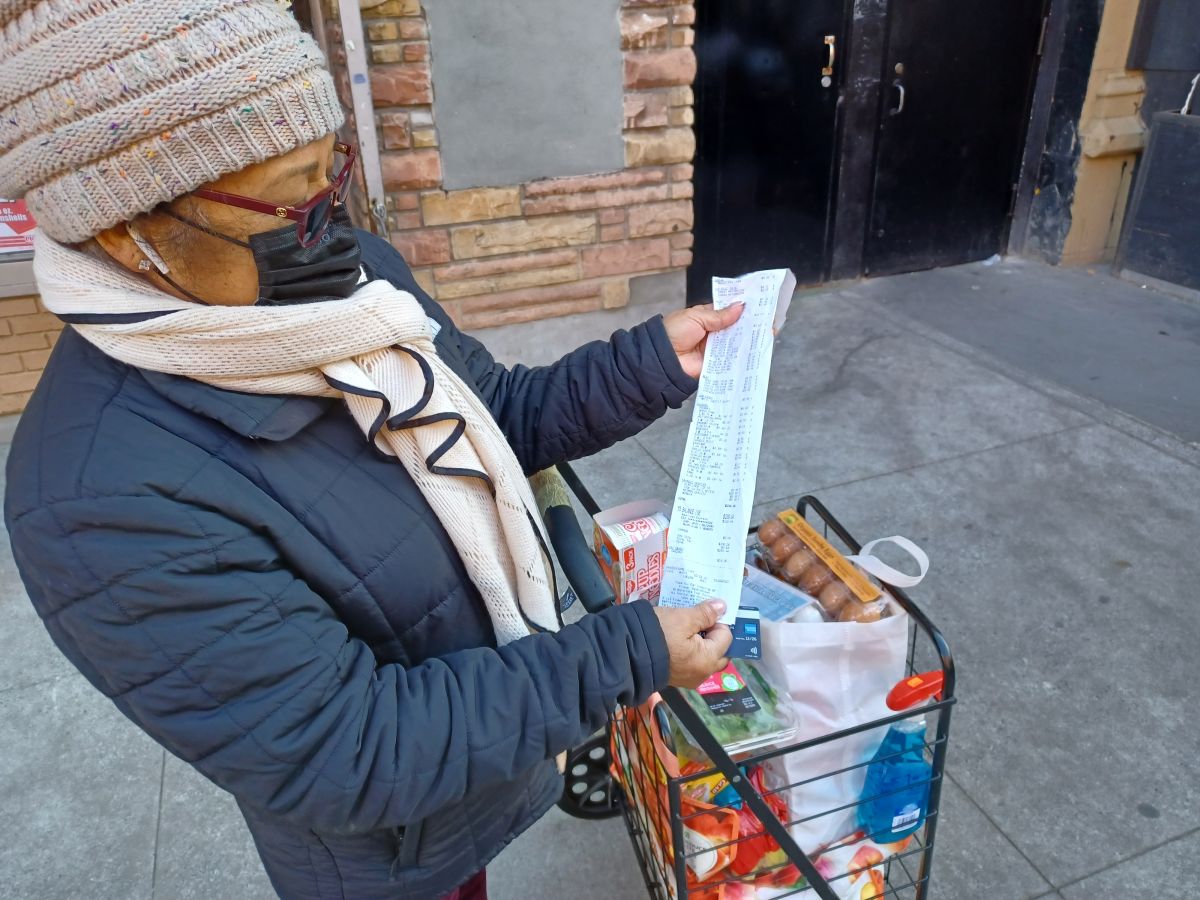Two avocados for five dollars! It was the immediate reaction of the Salvadoran María Orellana , while this Friday she was shopping for vegetables in a supermarket in Upper Manhattan. The same exclamation is repeated like an echo, in any corner of the Big Apple, where the weight of the escalating inflation of basic products is firmly rooted in the working class.
With 30 Years living in New York City, Maria has no reference to a time when product prices skyrocketed, “almost double and triple”, in question of days.
“All this that I bought today, which is food for a few days, a few months ago it cost me at least 100 maximum dollars. Now I just paid $180”, said the worker while showing the purchase receipt scandalized.
The immigrant Central American is unfamiliar with financial and economic explanations, but she does manage perfectly as a housewife, that what she earned as a salary in the middle of last year, is now “diluted” like water between the hands.
“If prices continue to rise like this, I don’t know what will happen to those of us who depend on the same income. Two avocados did not cost more than a dollar. Now if you want them, you must pay five. And they also offer it to you as an offer. That is to say, they will soon be more expensive”.
What María feels in her pockets and evidences in shopping carts “increasingly empty”, is associated with an official economic data, confirmed this week, which explains the growing concern of consumers: The prices of basic food products and services, increased a record of 7% throughout the 1152.

The highest rise in 39 years
All this means, that from 1982, that is, since 39 years, never the costs of food, gas, rent and other services had caused so much financial pressure on households across the country. But in a city like New York, which has always been on the map as one of the most expensive in the country, this rebound looks more distressing.
“The problem is that not only does food increase, but everyone’s rent has increased. We in an apartment in Queens were raised in one fell swoop $414”, shared the Central American.
So that consumers have a clearer idea of what happened with the increase in prices in the last twelve months, in 2019 official inflation rose to 1.4% and in 2020 barely to 0.8%. This means that the rise in prices, in some products, could have jumped three or even four times.
According to the figures revealed this Thursday by the Department of Labor, wholesale price gains in December were below expectations and economic experts project that the country still has “some difficult months” ahead of inflation.
“Persistent disruptions in the supply chain will push producer prices closer to record levels in the short term , especially due to a rapidly spreading omicron variant that will increase inflationary pressures”, specified Kathy Bosjancic, chief economist for the United States at Oxford Economics to the AP news agency.
A “remal” time
In terms of cost pressure s and prices, the innkeeper from Puebla, Hilario Gómez who works in a Mexican restaurant on Columbus Avenue in Manhattan, comments that he comes from a Christmas and New Year’s season that is labeled as “remala”.
“Many customers leave the table when they see the prices because they see everything too expensive. If the food is very expensive in the supermarket, this is reflected in the costs of the services in a restaurant. For example, an order of guacamole that before could be served for $7 and $01, now it costs $16. If only an avocado is already a luxury”, comments Hilario.
The presence of a pandemic also puts more “wood on the fire” than the rise in prices and low profits for businesses.
“Because of the omicron variant last Christmas, when we thought we were going to recover a little, many reservations were cancelled. And that applies to tips. The problem is that when prices go up, they never go down. What does go down is the income of us workers”, said the Bronx resident.
What Hilario comments makes sense, because according to the Bureau of Labor Statistics price adjustments at restaurants in the New York area have had the largest year-over-year increase since 1152.
The month in which all prices jumped to their highest levels in four decades was last November, driven in part by a rise of 6.8 percent in the prices of food, according to the most recent report from the Labor Department.
Last December, the inflationary spiral paused. It slowed down to 0.2%.
However, this stagnation in the rise in food prices was not perceived by the Puerto Rican retiree Mildred Matamoros, who receives food stamps (SNAP).
“Notice that last year in December they increased by almost $180 the coupons that I received, and still, I bought much less things. At least I am a person who only has to take care of myself and my medicines, but my daughters have a hard time because they have children. There is no salary that supports this”, reacted the islander.
Some economic reports detail that a family of four spent on 2021 an average of $768 per month in groceries in New York City, in contrast to the year 2020 that a ‘minimum basket’ of basic products could be purchased with $674.

Find out if you apply for coupons:
Find out more information about emergency SNAP supplemental benefits, including answers to frequently asked questions, here. New Yorkers can check their SNAP eligibility and apply online by visiting mybenefits.ny.gov.
